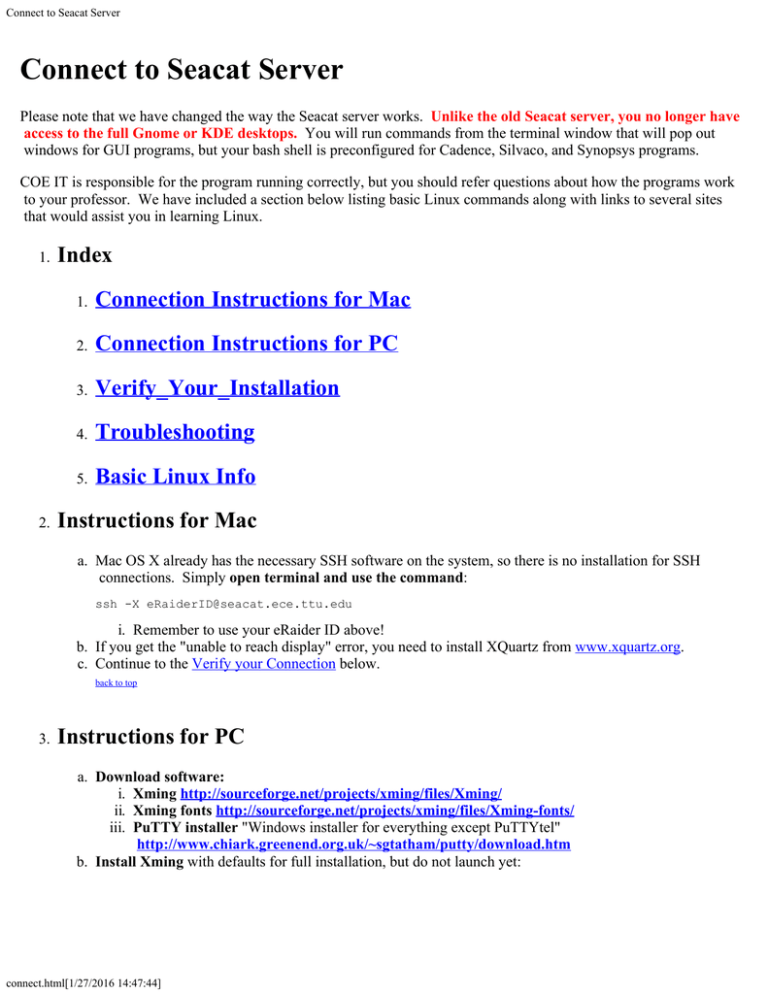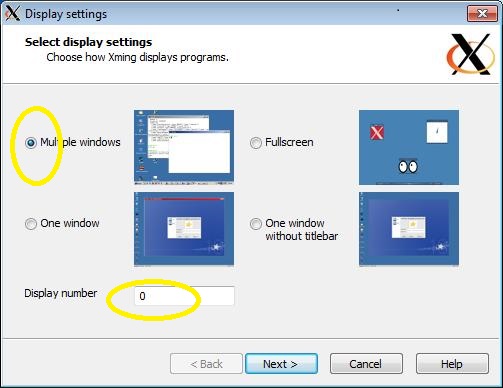

- #XMING PUTTY FOR MAC HOW TO#
- #XMING PUTTY FOR MAC FOR MAC#
- #XMING PUTTY FOR MAC INSTALL#
- #XMING PUTTY FOR MAC PORTABLE#
The tool has been designed with simplicity in mind and doesn't have any complicated icons and large menus that other tools may have.īasically, PuTTY is just like the older common utility "ldrs", but it is more "portable" version of this older utility. PuTTY is designed to be very convenient for usage with the Windows networking tools because of its simplified menu structure.
#XMING PUTTY FOR MAC PORTABLE#
This tool is used to remotely connect to an existing Windows or Unix box from Windows by using a portable device. Let's test an application to verify that we have setup everything correctly.PuTTY Portable is an excellent FREE portable Telnet/SSL Client based on the well known PuTTY utility. You may need to wait until you have been assigned a node. This simply allows us to access one of the cluster's nodes. Now in PuTTY, type in (modify as needed for your core count and time limit): Note that you may not see anything after clicking finish. Keep clicking next and use the default settings. In this example, I will choose "Multiple windows". This will simply determine how the program you are trying to run will look on your desktop. Now open up VcXsrv (also known as xlaunch) and select a display option. You will be prompted to login with your NetID, Google Authenticator (if relevant for the system) and your password. This will tell PuTTY to display to VcXsrv's window.Ĭlick open. In the "X display location field, put in the following location: (Both are boxed in red)Įxpand the SSH tree, click on X11 and check "X11 Forwarding". Next, navigate to SSH, and check "Enable compression". In the Host Name box, type the name of the server you are connecting to, we're using Condo as the example here: If neither of these are set, please configure them.
#XMING PUTTY FOR MAC HOW TO#
You now know how to run X Forwarding on Mac! Windowsīy default, PuTTY should have the port set to 22, and connection type should be set to SSH. To test if we have set up X11 forwarding correctly, we try to run mathematica. After running this command, you should be assigned a node that you can use.

This allows us to use one of the nodes in the cluster. Once you have successfully connected, type in the following (modify as needed for your core count and time limit): You will be prompted for your Google Authenticator code (if on condo or nova) and your password. Note that the "-Y" flag can be used instead of "-X", but skips X11 security extensions, so only use it if "-X" fails. (If you don't see the Applications > Terminal part, then you may need to open XQuartz once, close it, and you should be able to right click and see these options.)īegin by running the following command a terminal: This will configure XQuartz to run the application we want. In the dock, right click on XQuartz, hover over Applications and click on Terminal. Once you find it, click it once and drag it down to the dock at the bottom of the screen. Navigate to Finder > Applications > Utilities.

X Forwarding allows us to run software on Linux/Unix server with a Windows style GUI (Graphical User Interface). If you're on a personally owned device, use the links below:
#XMING PUTTY FOR MAC INSTALL#
If you are connecting from a University owned computer, please install the applications via self-service on, or talk to your departmental IT support person.
#XMING PUTTY FOR MAC FOR MAC#
This guide will explain how to configure and use X-servers for Mac and Windows on Pronto, Condo, and Nova:


 0 kommentar(er)
0 kommentar(er)
